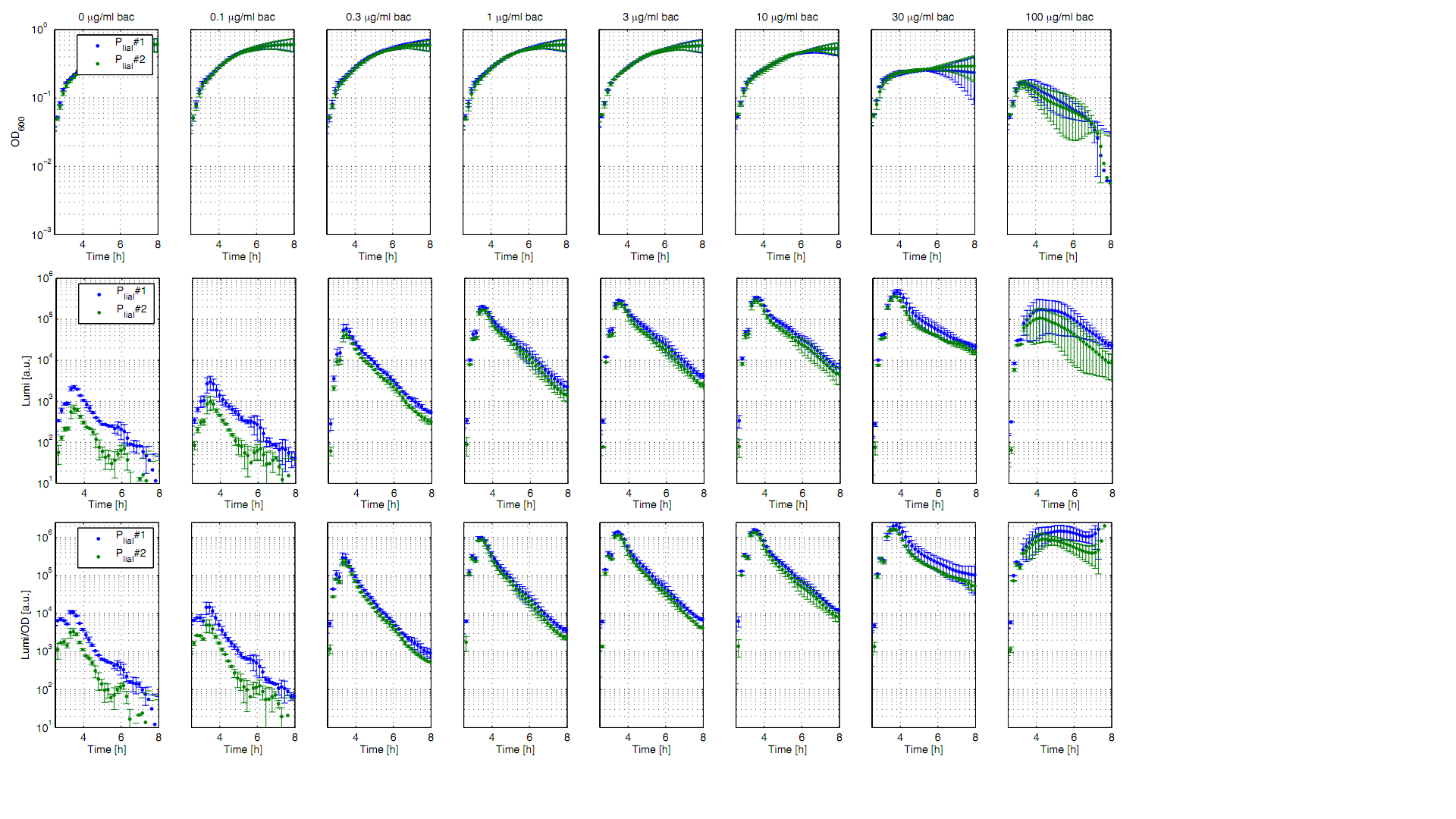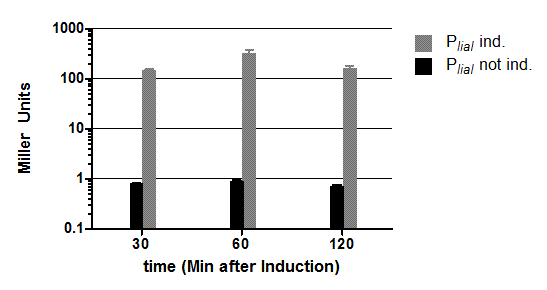Team:LMU-Munich/Data/Backup
From 2012.igem.org
(Created page with " ===Bacillus BioBrick Box - Promoters=== <p align="justify"> [[File:Auswertung Anderson promoters.png|thumb|right|400px|'''Fig. 1: Luminescence measurement of Anderson promoters...")
Newer edit →
Revision as of 17:17, 19 September 2012
Bacillus BioBrick Box - Promoters
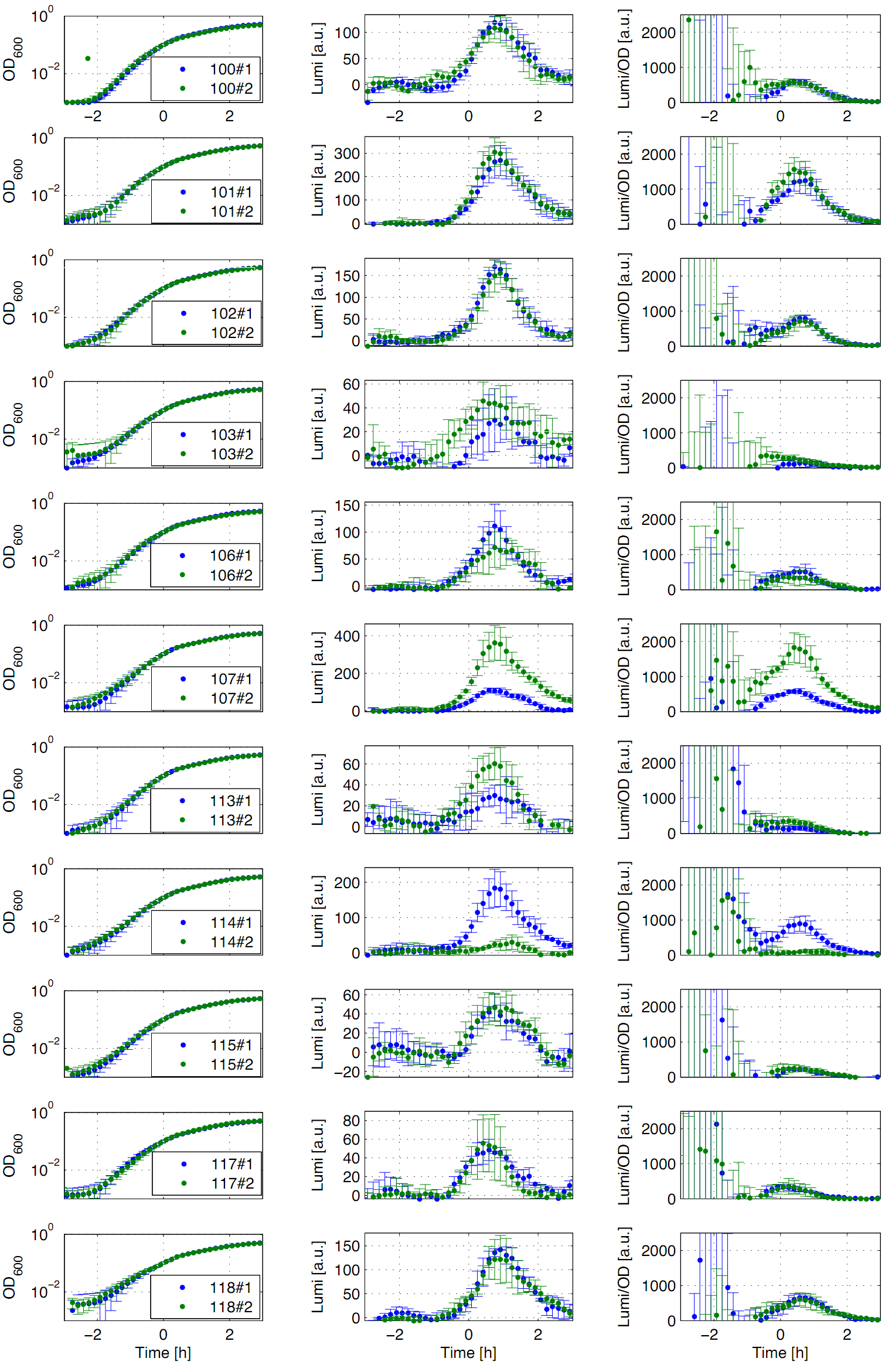
Eleven of the nineteen promoters of the [http://partsregistry.org/Part:BBa_J23100 Anderson collection] (J23100,J23101, J23102, J23103, J23106, J23107, J23113, J23114, J23115, J23117, J23118) were evaluated in the reporter vector pSBBs3C-luxABCDE from the BioBrickBox containing the lux operon as a reporter for promoter activity. The gene expression which correlates to the promoter activity leads to the expression of the lux operon with the luciferase. The luminescence which is produced by the luciferase can be measured with the plate reader (BioTek). Data derive from three undependant measurements (Fig. 1). Curves were fitted over each other (t=0, OD600=0,3) and smoothed by taking average of three neighboring values. OD600 values shown are plate reader units and about one third of the usual OD600 values. All clones show a usual growth curves. The activity of the promoters raises during the pass from the transition to the stationary phase. This maximum (t=1h) reaches from 200Lumi/OD600 (promoter J23115) to a maximum of 1500 Lumi/OD600 for the strongest promoter (J23101). Afterwards the activity goes down to the beginning level (t=2h). The oscillation of luminescence (Lumi/ OD600 in the beginning of the curves are due to the small OD600 and do not mean a high promoter activity. The luminescence of one clone of the promoters J23107 and J23114 do not show activity where in future a second clone with promoter activity should be measured. In comparison to all the other evaluated Bacillus promoters these Anderson promoters showed a very low acitivity in B. subtilis.
To measure the activity not only with the lux reporter operon, four promoters of the Anderson collection were cloned into the reporter vector pSBBs1C-lacZ to do β galactosidase assays and then to compare the results of the strength of these promoters in B. subtilis. (Fig. 2)
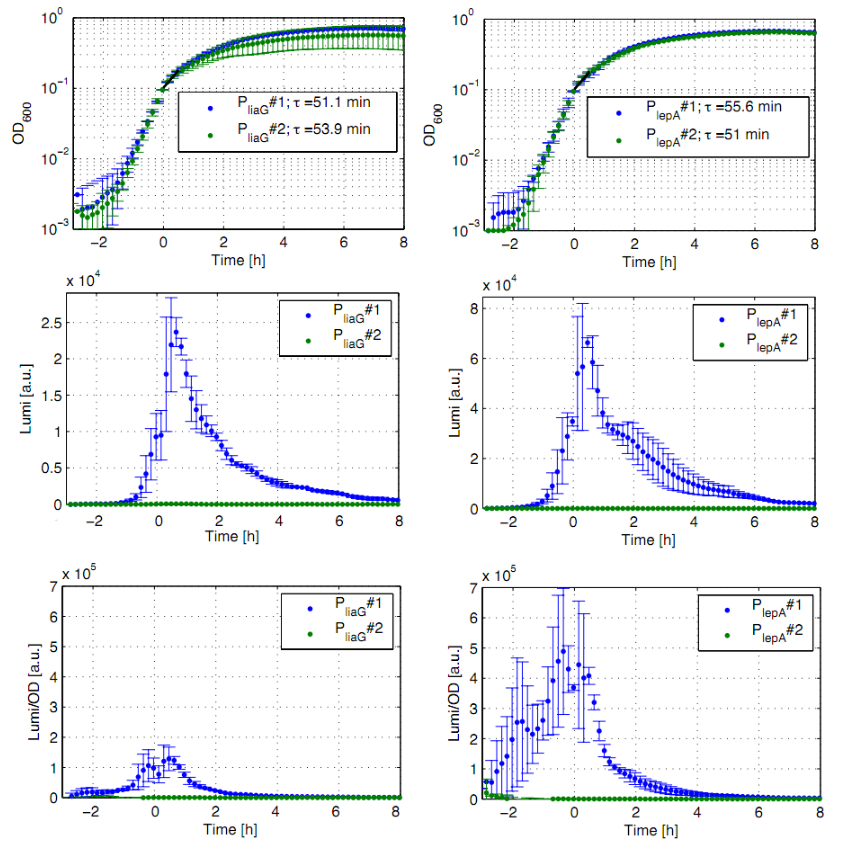
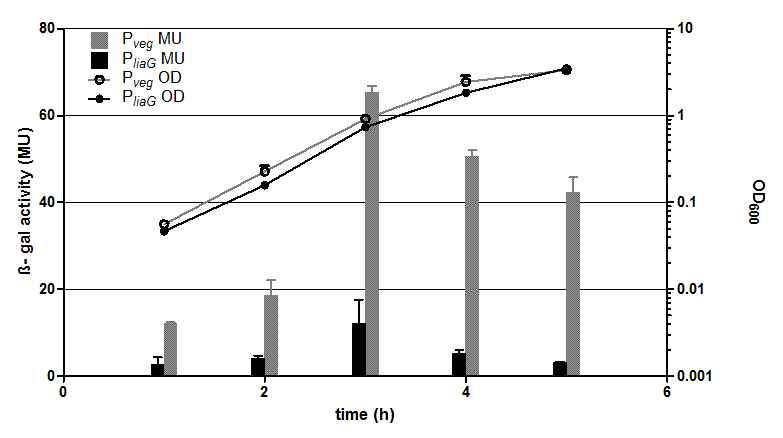
The β galactosidase assay of the constitutive Bacillus promoters Pveg and PliaG was repeated three times. Data show one representative result. Two undependant clones of B. subtilis with the same construct were measured and their mean with standard deviation is show in the graph. In the beginning of the growth curve both promoters show a small activity. But then it raises to a maximum before it decreases to the begininng level after about seven hours (Data not shown). Summing up the course of activity of both promoters Pveg and PliaG is very similar based on the growth curve. The highest beta galactosidase activity and therefore the highest activity of the promoter Pveg can with an maximum of 65 Miller units be found during the transfer from the logarithmic to the stationary phase. This is about five times higher than the acitivity of the promoter PliaG with an maximum activity of about 12 Miller Units.
 "
"
